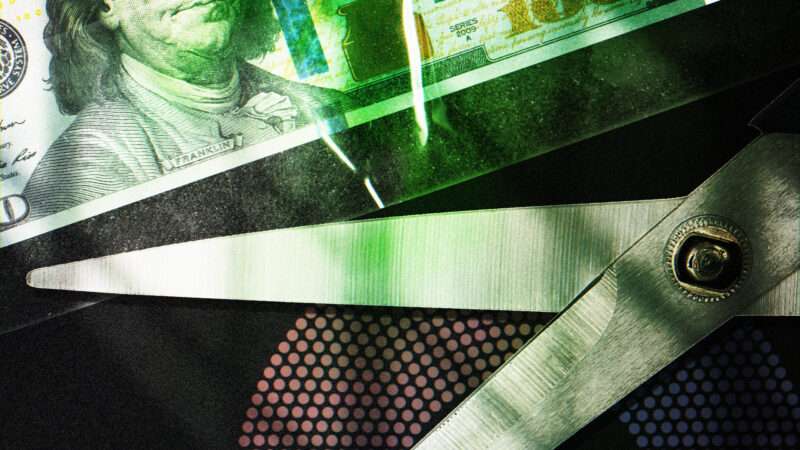
As part of a new budget deal working its way through Congress this week, lawmakers have proposed to cut $12 billion of spending that would never occur—and then use the "cuts" to offset new spending in another part of the budget.
Clever magic trick or massive budget gimmick? The answer probably depends on whether you're a member of Congress or a taxpayer.
On Sunday, House and Senate leaders announced a deal to fund about half the government's discretionary budget through the end of the fiscal year, and lawmakers are now working to pass that agreement into law before the March 8 deadline. (The other half of the discretionary budget is good to go until March 22.) Because Democrats and Republicans have previously agreed to cap the discretionary budget this year, the 1,000-plus-page bill unveiled Sunday includes a lot of cuts to planned spending—known as rescissions—that are being used to offset spending increases in other areas.
One of those rescissions, however, is an illusion.
At the center of this budget gimmick is the Department of Commerce's Nonrecurring Expenses Fund. Even by the Department of Commerce's standards, this is a boring nook of the budget, one that's used for "information and business technology system modernization and facilities infrastructure improvements necessary for the operation of the Department." Basically, when the bureaucrats at the Department of Commerce need a new printer or laptop, this is where they get the money to pay for it.
When Congress created the fund in 2019, it budgeted $20 million to the Nonrecurring Expenses Fund. That was supposed to fund its operations through 2022. In the ocean of federal spending, this was supposed to be one tiny bucket.
That changed in a big way last year when Congress passed the Fiscal Responsibility Act of 2023, which lifted the federal debt limit and imposed the new caps on discretionary spending. That bill included a provision authorizing Congress to spend up to $22 billion over the next two years on the Commerce Department's Nonrecurring Expenses Fund. Suddenly, this fund which had operated for three years with a budget of $20 million was cleared to receive more than 1,000 times as much money.
No, the Commerce Department wasn't suddenly in need of millions of new printers. As David Ditch, a senior policy analyst at The Heritage Foundation, explained last year when he uncovered this gimmick within the debt limit deal, it was highly unlikely that the Commerce Department was ever going to use even a fraction of the new spending appropriated to that fund. "It allows spending up to that amount, like with a credit card limit," he wrote. "However, the fund is designed to spend only a much smaller amount in reality."
When the Congressional Budget Office analyzed the changes made by the debt ceiling deal, it concluded that the higher budgetary limit for the Nonrecurring Expense Fund would increase overall spending by about $100 million over the next decade. The vast majority of that $22 billion, in other words, would never be used.
Now, Congress is proposing to cut about $12.8 billion from that fund and to use the supposed cuts to offset new spending in other parts of the discretionary budget—spending that actually will happen.
"This would be like putting a $1 million unicorn in your family's budget, then removing the unicorn and claiming you now have $1 million to spend on boats and luxury cars," Ditch explained last year.
"They use this fake cut to claim savings and spend more," he wrote Monday on X (formerly Twitter).
One might also note that this gimmick contains all three elements of a classic magic trick. There's the pledge, which is the Fiscal Responsibility Act's placement of $22 billion in the Commerce Department's budgetary authority. There's the turn, where the magician makes something disappear—in this case, the rescission included in the new budget deal. And then there's the prestige, in which that spending reappears as funding for various agencies and bureaucracies across the rest of the federal government.
The rest of us are the marks in the audience who aren't quite sure what just happened.
The post New Budget Deal Includes $12 Billion 'Cut' That Doesn't Actually Cut Anything appeared first on Reason.com.







